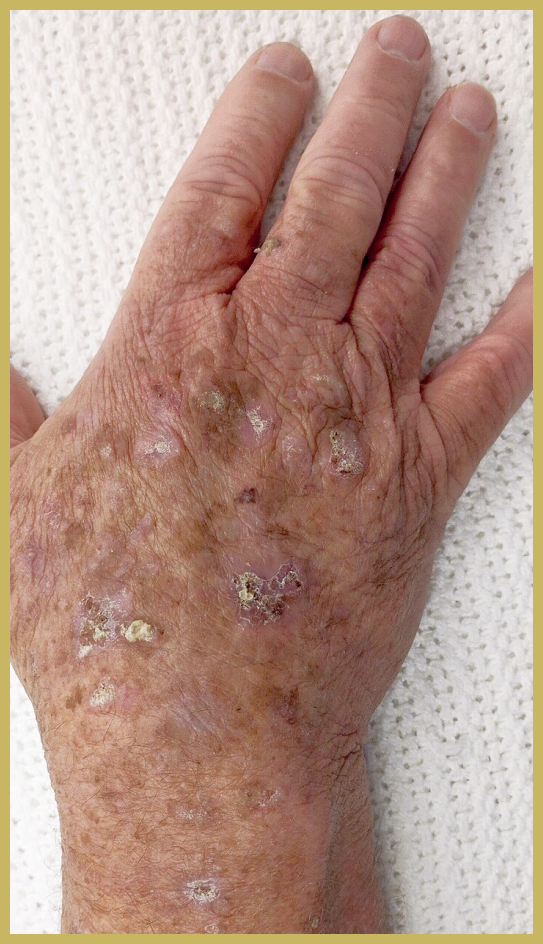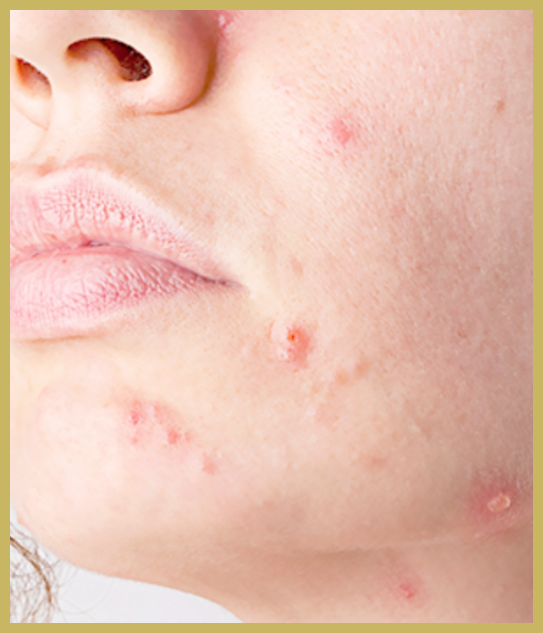Actinic Keratosis

Guard Your Skin: Understanding Actinic Keratosis and Its Prevention
Actinic keratosis, often AK, is a common skin condition caused by prolonged exposure to sun ultraviolet (UV) radiation. It typically manifests as rough, scaly patches or bumps on sun-exposed areas of the body, such as the scalp, face, chest, arms, hands, and legs. These lesions often appear red or pink and may feel tender or itchy.
While actinic keratosis itself is benign, it is considered a precancerous lesion because, if left untreated, a small percentage of cases can progress to develop into skin cancer, particularly squamous cell carcinoma. Actinic keratosis affects approximately 58 million of the population, making early detection and prompt treatment crucial in managing actinic keratosis and preventing its potential progression to skin cancer.
Rest assured, there are various treatment options for actinic keratosis, each tailored to the severity of the condition. These options include:
- Topical Medications: Prescription creams or gels containing ingredients such as fluorouracil, imiquimod, or diclofenac can help reduce the abnormal skin growth associated with actinic keratosis.
- Cryotherapy: This procedure involves freezing the affected areas with liquid nitrogen to destroy abnormal cells and promote the growth of healthy skin.
- Photodynamic Therapy (PDT): PDT is a treatment that combines a light-sensitive medication with a specific type of light to target and destroy precancerous cells selectively. In simpler terms, the medication is first applied to the skin; then, a special light is used to activate the medication, destroying the precancerous cells. This treatment is effective in treating actinic keratosis.
- Curettage and Electrodessication: This surgical procedure involves scraping away the affected skin and cauterization, which uses heat or a chemical to seal blood vessels or prevent bleeding by removing abnormal cells.
Medical Dermatology

Prevention is critical in managing actinic keratosis and reducing the risk of its recurrence. Some effective preventive measures include:
- Daily Use of Sunscreen: Applying sunscreen with a sun protection factor (SPF) of 30 or higher to all exposed skin areas can help shield the skin from harmful UV radiation and prevent the development of actinic keratosis.
- Sun-Protective Clothing: Wearing protective clothing, such as wide-brimmed hats, long sleeves, and sunglasses, can protect against UV exposure.
- Avoiding Peak Sun Hours: Limiting outdoor activities during peak sun hours, typically between 10 a.m. and 4 p.m., can minimize UV exposure and reduce the risk of developing actinic keratosis. The sun's rays are strongest during these hours, increasing the risk of skin damage and developing actinic keratosis.
By adopting these highly effective preventive measures and seeking early medical intervention, individuals can confidently safeguard their skin health and significantly reduce the likelihood of developing actinic keratosis and its potential complications. This knowledge empowers you to take control of your skin health.
